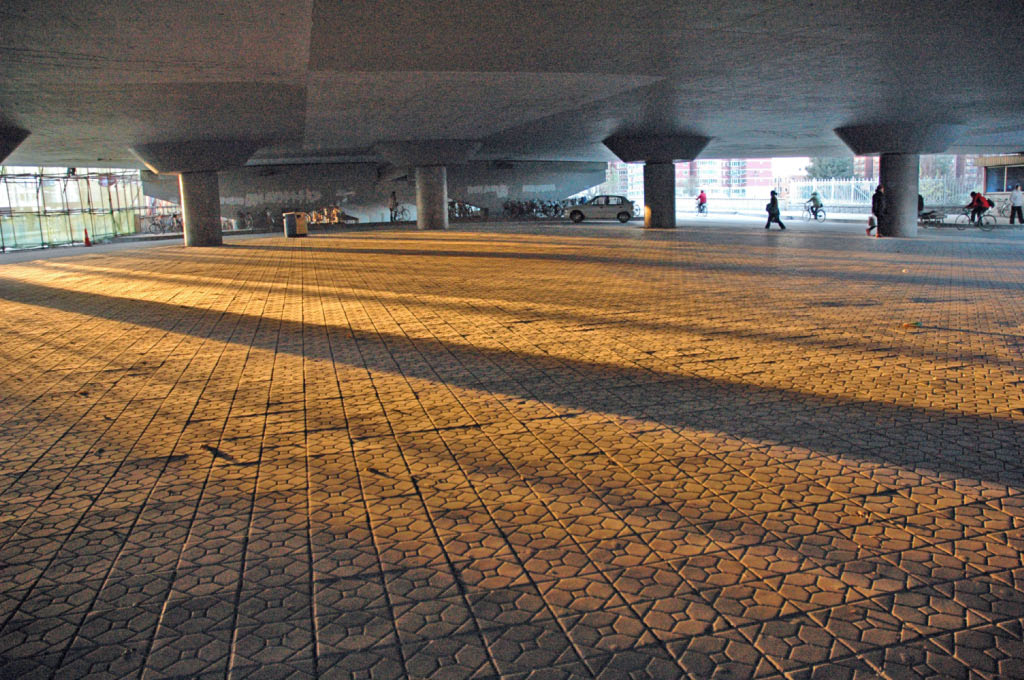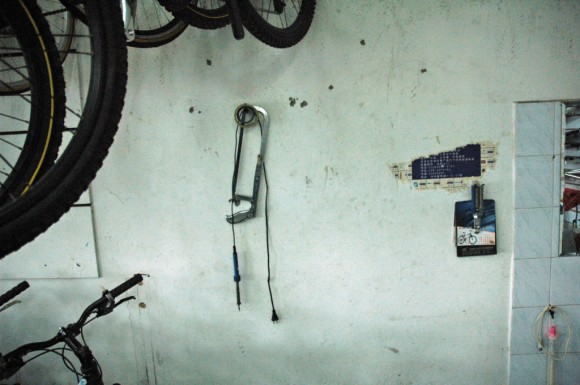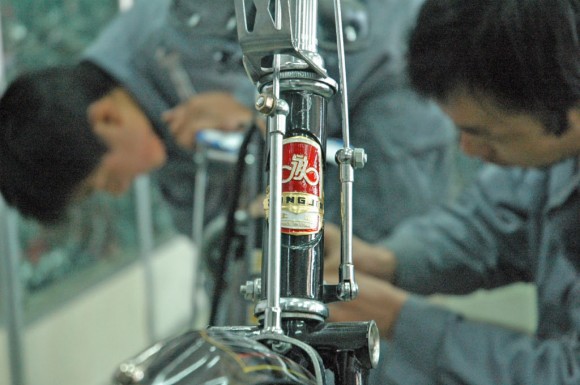The easiest and most pleasurable way to cover a lot of ground, spot interesting situations and when the occasion arises interact and document what is happening is simply to ride around the city on a bicycle. If the study focus allows it one of the first tasks is heading to the nearest bike shop to pick up transport for the study. A new bicycle in China can be yours for 130 RMB (13 Euro) going up to 330 RMB for a classic black-framed metal-lever-brake Shanghai bicycle.
Prices in India are similar. The economics make a bit more of a dent elsewhere – rental in San Francisco is about 100 USD (85 Euro) for the week, New York is a bit cheaper. Seoul is the only city I’ve been researching in where there wasn’t really a cycle culture to speak of. Some cities are better to cycle around than others. There no pleasant way to describe cycling through the pollution and expelled air-con heat of thousands of cars of Bangkok’s rush-hour gridlock. Some Chinese cities can get a bit hairy – vehicles there tend to take the shortest path regardless of whether you are in the way. Cycling Hanoi is at first glance a chaotic wall of cycles and a few motorbikes, but becomes easier once you tune into rhythm of the city. Safety? My mantra is that it’s bad luck for locals to run over foreigners – take a hit on their insurance premiums and get tangled up in red tape? More likely to swerve to the right or take pedal from the metal. If I keep posting the mantra continues to work. Cycling a foreign city requires confidence – especially if it’s necessary to multi-task to document aspects of the journey. We sometimes run studies where the participants who are being shadowed are using bicycles – so naturally we do too. It’s difficult to collect accurate photo and video data whilst on the move on a bike although there are a variety of clamps available to hold the camera steady. The smaller the camera the better – the larger ones work themselves loose too easily. Cycle courier footage taken with a with a fish-eye lens mounted at wheel level has wow-factor but at the end of the day has little practical research value. A personal favourite of footage taken whilst cycling was Shanghai during a dusk commute taken with night vision.
One trip this summer involved cycling out from the center of Beijing and just keeping going. Each of the 5 ring roads that circle the city a marker of how far I’d gone. Weaving through neighborhoods, markets, onto the suburbs eventually to be replaced by factories and newly built technology parks, and soon after that (dorm) accommodation for some of these places. It took a meandering 90 minutes to reach the first fields which then continued uninterrupted for the remainder of the day, with only breaks for small hamlets. Yesterday bought another bike and nosed around the store whilst the mechanics were putting it together. The usual bicycle shop equipment joined by a soldering torch – hanging on the wall of the shop (photo above). It highlights two things: the evolution of what products are sold in what stores – electrically assisted bicycles have taken off in China and are sold in motorbike and bicycle stores; the move from the mechanical to the electronic. At what stage does it become impossible for the shop mechanics to repair common faults on the products they sell? Prior research into informal repair cultures highlights that there can be a business case for repairing mass produced objects such as mobile phones, but on the other hand the piles of circuit boards in trash dumps and corners of reycling plants tells me that this is not always the case. To what extent does the ability to repair affect how a product takes off in highly price sensitive markets?


